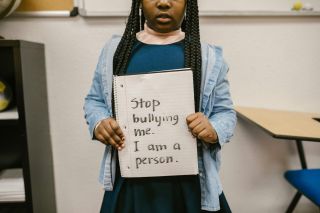Bullying
Fighting Back: Bullying Among Female Athletes
The first step to preventing bullying both on and off the field is awareness.
Posted December 11, 2023 Reviewed by Michelle Quirk
Key points
- Participation in team sports is beneficial for female adolescents, but a positive team environment is crucial.
- Bullying negatively impacts individual players as well as team cohesion.
- Awareness and coping skills are essential for the reduction of bullying and the improvement of team dynamics.

A large number of studies have shown that participating in team sports can be beneficial to female adolescent development. For example, competency and skill development in the particular sport can be improved, and feelings of general social acceptance are likely to increase (Heitler, 2004). Indeed, girls who continue with team sports such as soccer for longer tend to cite “the social rewards of playing” as a primary benefit and reason for their continuation in the sport (Keathley et al., 2013). Generally, self-esteem drops when girls reach adolescence, but participating in team sports can help enhance self-esteem and improve teamwork skills (Williams, 2023). However, for these benefits to be maximized, a positive and inclusive team environment is crucial.
Unfortunately, a large number of adolescents—particularly female adolescents—struggle with bullying when it comes to sports and physical activity—both in school and within their teams. One study that examined whether or not adolescents elect to continue participating in physical education in school after their requirements were fulfilled found that females in particular are likely to drop out. The females cited reasons such as forced competition, degrading evaluation, and sexuality- and size-related harassment by both peers and teachers (van Daalen, 2005). Among female adolescents participating in competitive athletic clubs outside of school, another study found that athletes were two to three times more likely than nonathletes to be victims of bullying at school. Possible reasons for this higher rate of victimization included “girl culture” and learned aggression (Volk & Lagzdins, 2011). Indeed, aggression among girl athletes—for example, among female soccer players—is common and is often traced back to their team’s "moral atmosphere," including team aggressive norms, players’ perceptions of the norms, players’ beliefs that their coach supports aggressive behavior, and players’ moral motives for behavior (Guivernau & Duda, 2002; Stephens & Bredemeier, 1996).
Bullying was also cited as a problem for adolescent female athletes by Tamminen and colleagues (2013). O’Neill and Calder (2014) suggest that these successful student athletes are potentially being bullied by their less-successful peers in order to normalize them, but that this bullying can have a detrimental impact on their school life and overall well-being. For example, bullying can result in both physical and psychological suffering. Victims of bullying are more likely to suffer from headaches, stomach aches, backaches, and dizziness. Psychological effects can include bad temper, nervousness, feeling low, difficulty getting to sleep, morning tiredness, feeling left out, loneliness, and helplessness. These effects have been found across multiple countries (Due et al., 2005).
If bullying occurs within the team itself, negative effects might include a reduced enjoyment of the sport they are playing, detriments to sports performance, detriments to academic performance, isolation from the team, reduced self-esteem, sadness, embarrassment, and fear (Jewett et al., 2020). In addition to the individual, the entire team can be impacted. Team chemistry might decrease, both socially and in terms of performance on the field or court.
I have personally witnessed the impact of negative social interactions and bullying on a few different soccer teams of which my 13-year-old daughter has been a part. The negativity becomes a vicious cycle. Someone is insulted or rejected, which can lead to negative backlash or retaliation, which might result in factions or within-team cliques as the players take sides. Or, if the individual does not react outwardly, but instead internalizes the harassment, then her performance could be negatively affected, as could her perception of the team and her enjoyment of the sport. As her performance suffers, she could be insulted again, which could lead to further outcasting, distress, and impairment of overall team cohesion.

On the other hand, when everyone gets along and supports one another, the team is in sync both socially and in terms of performance. Play becomes more fluid, trust and positivity rule the game (or practice), and success in every form is much more likely. It is this type of environment that results in the benefits mentioned at the beginning of this post, and it is this type of environment that causes my daughter to love the game.
To encourage more of the harmony and less of the tension, it is important for coaches, parents, and players to discourage and refuse to tolerate bullying. If it does take place, however, athletes can still learn to cope with it effectively in order not to have their own performance suffer. For example, to reduce the negative effects of bullying, athletes have cited the importance of social support, realizing their own strength, gaining perspective, and gaining a desire to help others (Tamminen et al., 2013).

Formal interventions to increase positive psychology among teams have also been effective, especially when they include the coach (Gabana et al., 2020). Such interventions have shown improvements in athletes’ gratitude, mental health, resilience, team cohesion, and coach-athlete relationships, and these improvements continued after long-term (1- and 3-month) follow-ups. Because a first step to bullying prevention is always awareness, it is helpful for coaches to recognize when bullying or harassment is taking place within their teams and for them to highlight to their players that not only are they (as the coach) aware of what is happening, but the players themselves need to recognize it.
In an attempt to highlight potential instances of bullying (and to help prevent further instances), my daughter’s soccer coach recently assigned all of his players to listen to a podcast. This podcast was published by former college All-American soccer player and current performance coach Erica Suter, along with Dave Gleason, athletic and strength coach, gym owner, and coach trainer. The podcast offers some very poignant advice for young girls playing soccer who may encounter team cliques and/ or bullying, and how to cope with these situations. My daughter’s coach not only required everyone on his team to listen to this podcast but also asked them to send him three things they learned from it or three reactions they had to it.
The girls had some very interesting things to say after listening to the show, including acknowledgment that “Noninclusive cliques lead to bad communication on the field, and the whole team is affected.” They mentioned how they learned that “Trust is the key to good team chemistry,” that “Team cliques can possibly derail a team’s future,” and that “A team’s attitude toward each other makes or breaks the team.” They also cited coping mechanisms that they picked up from the podcast, such as “Focus on your own performance over wanting to be in that one clique/ group”; “You can’t control what others say or think, you can only control what you do, say, or think”; “If you grow your self-confidence, you will be a magnet for other players and then boost their self-confidence”; and “Anything bullies say is a reflection on them.”
To help increase positivity among the team, they mentioned that everyone should “Try to be a good person and teammate,” and that “You don’t have to be best friends with the people on your team, but you do have to get along.” Overall, they believed the podcast was helpful and good to hear, and could help them grow as a team. As one player put it, “It’s something we all need to know because nobody should have to be in such a toxic environment, and it’s also super important to be kind to yourself and know who you are.” When bullying and insults are absent, the social cohesion among a team translates into a higher level of play that leads to victories both on and off the field.




